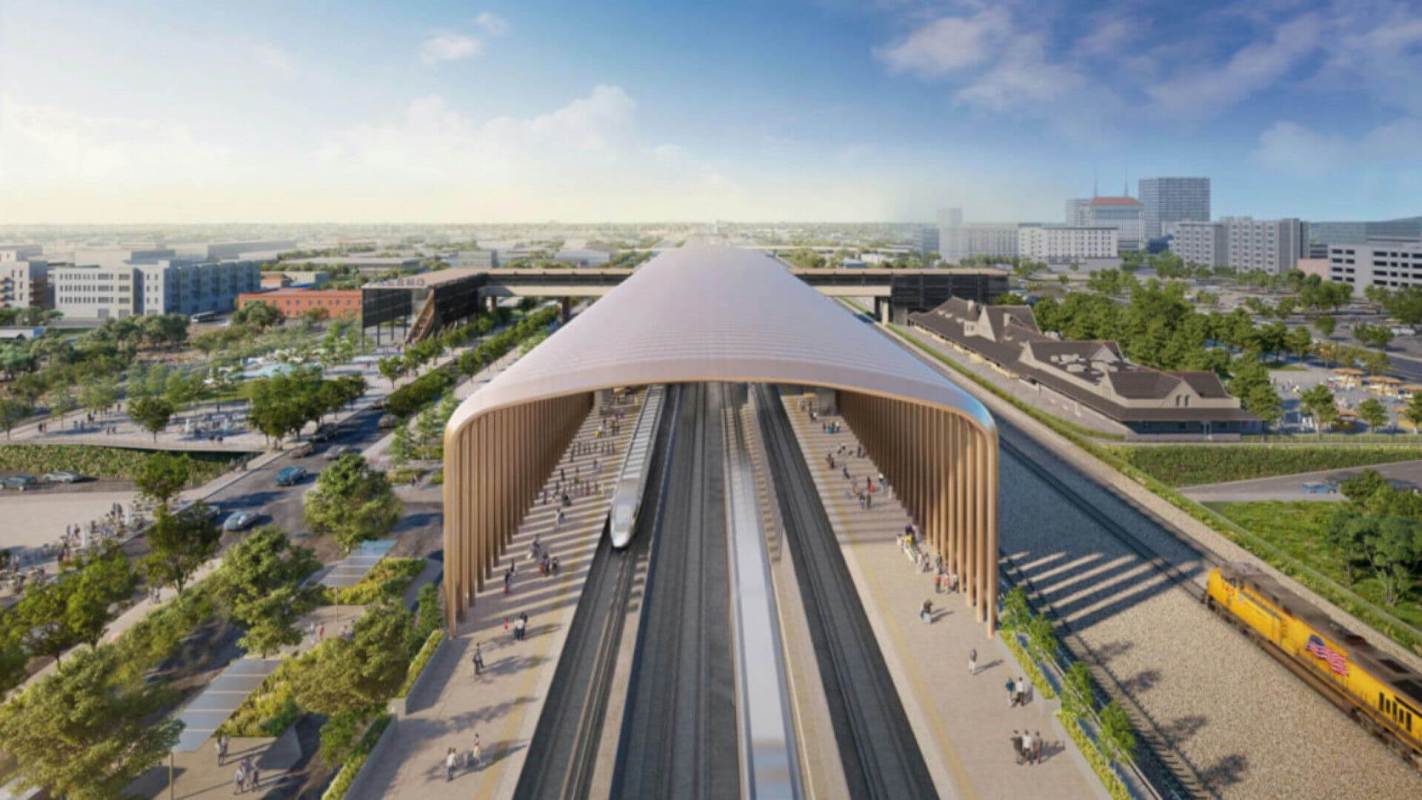Imagine being able to zip from San Francisco to Los Angeles in under three hours, all while cutting down on temperature-spiking pollution.
That's the promise of California's high-speed rail project, which just revealed slick new station designs that bring this sustainable transportation dream closer to reality.
The new station plans unveiled by the High-Speed Rail Authority showcase the sleek, modern look of the future Central Valley stops in Merced, Fresno, Kings/Tulare, and Bakersfield.
Massive 80- to 90-foot-tall canopies will provide a distinctive architectural identity, while details like grand staircases, elevated platforms, and seamless transit connections put the passenger experience front and center.
The designs come from architecture firm Foster + Partners and global sustainability consultancy Arup. "The canopy for all four locations is nearly identical, providing a recognizable architectural vernacular to be shared across the region," wrote reporter Andrew Nelson of SF YIMBY. "Beyond that, distinct treatment has been given for each of the concourses and main entrances."
It's all part of the 171-mile initial segment now under construction through California's Central Valley. The Bay Area connection is still a ways off, but this progress brings the project closer to revolutionizing how Californians get around.
"The project's future is also highly dependent on funding, which has come in relatively piecemeal chunks owing to the astronomical price tag," Nelson explained. Since voters first approved the rail plan in 2008, the expected price tag has ballooned from $34 billion to over $100 billion, surpassing the cost of the International Space Station. But that investment could pay huge dividends for the environment.
High-speed rail is one of the greenest forms of mass transit. It can whisk riders to their destinations while keeping gas-guzzling cars off the road.
Transportation is California's largest source of carbon pollution, according to the California Air Resources Board, so shifting more travel to high-speed rail could put a real dent in the state's carbon footprint.
The Central Valley segment alone is expected to avoid about 112,435 tons of carbon dioxide pollution per year by 2040. To put that in context, it's like taking 22,000 gas-powered cars off the road. And that's before rail service even connects the state's biggest cities. Imagine the potential for emissions reductions once the system is fully built.
HSR Authority hopes to start testing the train lines and trial runs for the Central Valley tracks by 2028, with construction on the stations potentially starting as soon as 2027. So while California's high-speed rail dream still has a long way to go, these sleek new stations mark an exciting step forward.
It puts California on track to more sustainable travel — so you can go easy on the planet while still getting where you need to go. Talk about a win-win.
Editor's note: A previous version of this article misidentified Arup as an architecture firm. We regret the error.
Join our free newsletter for weekly updates on the coolest innovations improving our lives and saving our planet.









